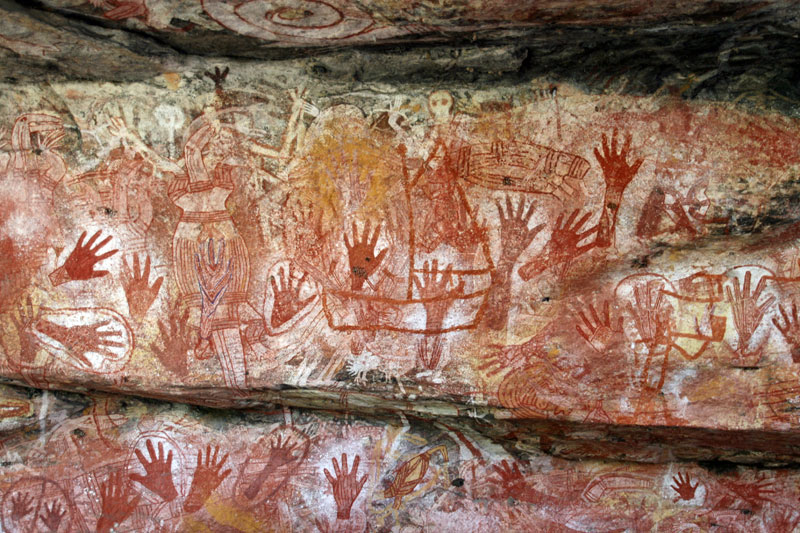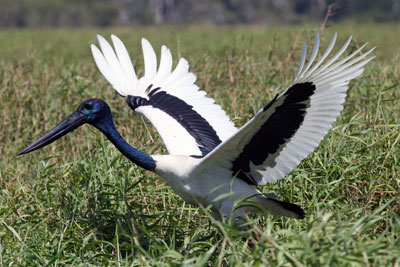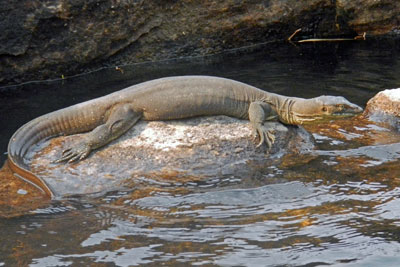Discovering Australia’s Arnhem Land
This article appears on page 20 of the May 2015 issue.
I had never heard of Arnhem Land until, quite out of the blue, Karolyn Wrightson of Essential DownUnder Travel (Asheville, NC; 877/977-4505, www.essentialdownunder.com) called and said, “I have a trip you can’t pass up!”
Karolyn had set up previous trips to Australia and New Zealand for my wife, Betty, and me, so we were well acquainted with what she was able to assemble.
Arnhem Land
To me, the name Arnhem Land did not mean much. It means a lot, however, to an Australian, and it means even more to an Aboriginal Australian.
A vast area of about 37,000 square miles (about the size of Indiana), Arnhem Land was declared an Aboriginal Reserve in 1931 and remains one of the largest in Australia.
We were going to visit (in August 2014) the highly restricted area near Mt. Borradaile, a registered Aboriginal sacred site situated on 700 square kilometers of land exclusively leased to Max Davidson, a personal friend of Karolyn.
Davidson’s Arnhem Land Safaris is situated close to one of the three Alligator rivers (so named because the discoverer mistook crocodiles for alligators), and the area is regarded as one of the richest biological regions in Australia.
Aboriginal people have lived in Australia for 40,000 (some say 60,000) years. Their lifestyle has been compared to that of Stone Age tribes, but it has served them well. They are able to support themselves working only about four hours a day, so outsiders should not be too quick to use the word “primitive.”
If you visit, you can sit in the same cave, sit on the same rock and place your hand on the same wall as people have done for 40,000 years.
Getting there
A 16-hour flight from Dallas/Fort Worth with Qantas Airways (fly them; the wine flowed freely and our front teeth were not firmly embedded in our kneecaps, even in coach) was followed by one internal flight, and then we were in Darwin, located in northern Australia. We had scheduled a day in our itinerary to recover from the flight, and I am glad we did.
A day later, we were picked up in a private vehicle for the long drive to catch a small charter plane to get to Max’s camp.
Max Davidson, the camp owner, was a buffalo hunter, a truck driver, a guide and, finally, the owner of one of the most exclusive camps in Australia. The camp is exclusive because of its location and because it allows access to some of the best Aboriginal rock art in Australia. It is art that is not trampled by thousands of tourists but still remains in pristine condition.
Getting to Max Davidson’s camp is not easy. It is about 200 kilometers as the crow flies from the nearest settlement that we would call a town. If you choose to fly, you will go by small charter plane both in and out. There is also a “drive partway, then fly in and fly out” option, which we took, and I would recommend it. (The cost varies depending on your choice. Plan to spend about AUD1,000, or $765, per person for the transfer.)
Driving in took about five hours, allowing us time to see the changing landscape. The last portion, a 20- to 30-minute flight in a very small aircraft, had us flying low over the rock bluffs and following the meandering river while we looked for crocodiles. (We saw quite a few.)
The camp
Upon landing, we were met at the dirt strip for a short drive to the camp. The complex consisted of a main building, where we registered and had our meals, and the camp, itself, made up of about 20 metal cabins (AUD750-AUD850, or $574-$650, per person per day, double, including all meals, tours, activities and permits). All were within easy walking distance of the dining area in the main building.
The cabins were spaced so you felt alone, as if you had your own private part of the surrounding landscape. It was nice to lie in bed at night and hear the dingoes.
The bed was in the main room, which had three screened sides, and the bathroom was located behind a door in the back of the cabin. An overhead fan (powered by a solar array) kept it cool in the dry night air, and the screen let in all the sounds of the night.
The agreement between Max and the Aboriginal owner, Charlie, the last living speaker of the Amurdag language, was to keep the property as close as possible to the way it was before the white man arrived, and Max has done this.
Visitors see the various areas in small groups of six or seven people led by a knowledgeable guide from the camp. There are no worn paths to follow. Any artifacts that are found are left where they are, and gravesites, as well as other areas which are considered sacred, are respected. Consequently, it is possible to see the landscape as the Aboriginals saw it. It is possible to sit in a small cave and feel the inside of a grinding hole and imagine what it was like when the Aborigines were there.
There was no time schedule. We could linger in a cave or sit on a rock ledge as long as we liked and just soak in the surroundings without seeing another group coming and spoiling the moment.
You get a feel for the area the Aboriginal people lived in. You see where they buried their dead, the red ochre still on the bones of the important people. There are no fences, no ropes, no restrictions to mar the scene. It is a freedom you don’t often get to experience when traveling.
Water adventures
Max Davidson’s camp is located in a wetland. During the rainy season much of it is inundated, but when we were there the water was confined to the banks and marshes. Saltwater and freshwater crocodiles were common, as was a variety of birds, including fish eagles, ducks, geese, pelicans, peregrine falcons and jabiru storks. Brolga cranes were also common.
We took a small, flat-bottomed boat up the river at a leisurely pace, sometimes in transit to additional rock art and sometimes just to see the wildlife. On one trip, snacks and champagne were provided as the sun set.
The food was excellent, and the guides were knowledgeable and very courteous. Both were exactly what you would expect from an upscale camp.
There were so few people at the camp that we always felt as if we were taken care of as individuals, which, in fact, we were.
We stayed three nights, which was about right. We first arrived there just after noon, ate lunch, then headed out to look at the rock art.
One afternoon, with about two hours to spare, we went to a deep pool in the river to swim. It was a beautiful, clear creek which, during our visit, was little more than a very large, extended pond (a billabong) patrolled by a couple of lethargic Merten’s water monitors.
We got out of the vehicles and walked through the sparse brush to the water. Along the way, we passed several pityrodia bushes full of the rare and beautiful blue-and-orange Leichhardt’s grasshopper. They live only on these bushes and are seldom seen by most Australians.
This trip was not about eating or luxurious accommodations (although the beds were very comfortable); it was about seeing something few people will ever get to see. The longer I am away from this experience, the more I realize how fortunate we were to be able to have had it.
This trip is not for everybody, but for some of you, this is something you should not miss. I am more than grateful for that call out of the blue from Karolyn stating, “I have a trip you can’t pass up!”
She was right.
Next month, the Reeds’ account of their Australian adventure continues with a luxury cruise along the Kimberley coast.




